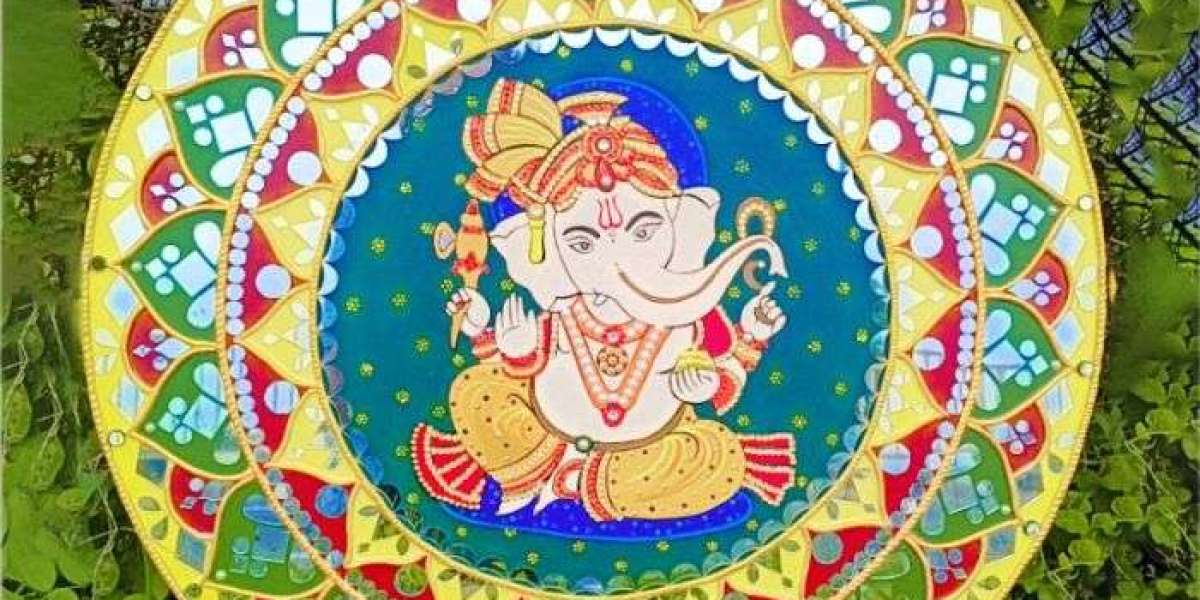Unveiling the Beauty of Lippan Kaam
Lippan Kaam, an age-old traditional art form hailing from the vibrant state of Gujarat, India, has captured the hearts of art enthusiasts and cultural aficionados worldwide. This intricate craft, characterized by its dazzling mirror work and mud relief work, carries a rich history and cultural significance that make it a true gem in the world of art.
A Glimpse into Lippan Kaam's History
Roots in Rural Gujarat
Lippan Kaam, also known as Mud and Mirror Work, has its origins in the rural regions of Kutch and Saurashtra in Gujarat. Historically, it was used to adorn the walls and interiors of traditional mud houses, providing not only aesthetic appeal but also functional benefits such as temperature regulation.
The Craftsmanship Behind Lippan Kaam
Materials and Techniques
Lippan Kaam primarily employs two essential materials: mud and mirrors. The base is made from a mixture of clay and camel dung, which is then applied to the walls or wooden surfaces. Skilled artisans create intricate patterns and motifs using small pieces of mirrors and white clay. The mirrors are strategically placed to reflect light, creating a mesmerizing play of illumination.
Symbolism and Cultural Significance
Lippan Kaam's Deeper Meaning
Beyond its visual appeal, Lippan Kaam carries cultural and spiritual significance. Many of the motifs used in this art form have symbolic meanings, often related to nature, spirituality, and folklore. Peacocks, birds, trees, and the sun are common motifs, each holding its own cultural importance.
Revival and Adaptation
From Tradition to Contemporary Art
In recent years, Lippan Kaam has experienced a revival and adaptation. Modern artists and designers have incorporated this traditional art into contemporary home decor, fashion, and even architectural design. Its unique blend of tradition and modernity makes it a sought-after craft in today's global market.
Preserving a Cultural Heritage
Challenges and Conservation
While Lippan Kaam continues to gain recognition and appreciation, there are challenges in preserving this art form. The transition from rural to urban living and the migration of artisans to different occupations pose threats to its survival. Initiatives to promote awareness, skill development, and market access are crucial to sustaining this cultural heritage.
Embracing Lippan Kaam
Bringing a Piece of Gujarat Home
Incorporating Lippan Kaam into your living spaces not only adds a touch of artistic elegance but also connects you to a rich cultural heritage. Whether through wall hangings, mirrors, or decor items, Lippan Kaam can infuse your surroundings with the magic of Gujarat's traditional craftsmanship.
Conclusion
Lippan Kaam is more than just an art form; it's a testament to the creativity and resilience of Gujarat's artisans. Its ability to bridge the gap between tradition and modernity makes it a treasure worth cherishing. So, if you're looking to add a dash of culture and artistry to your life, consider embracing the beauty of Lippan Kaam. This exquisite craft has the power to transform your space into a canvas of reflection, history, and vibrant tradition.








